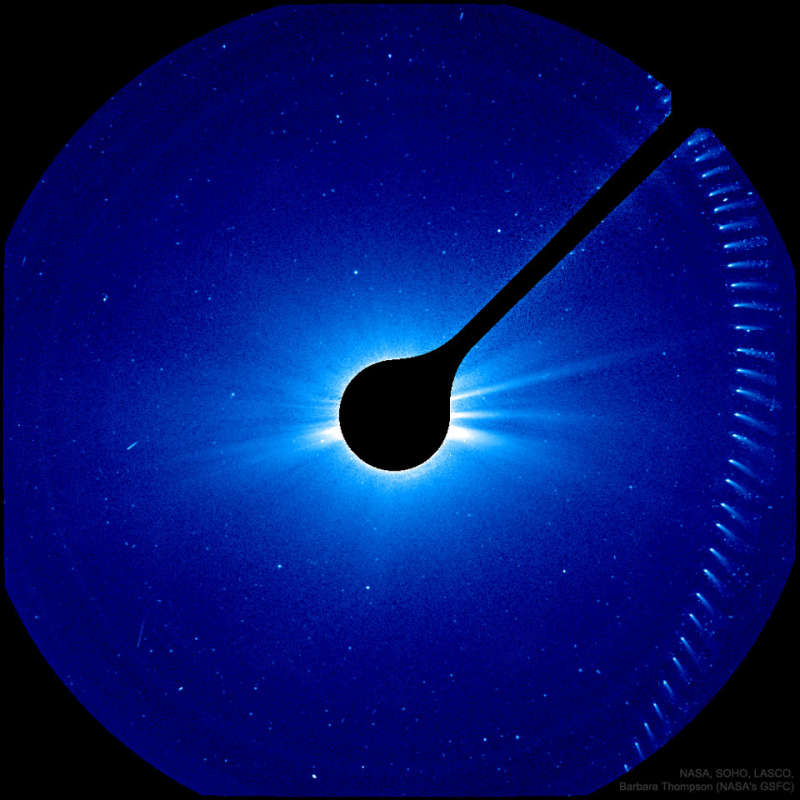Comet Machholz Approaches the Sun

Explanation:
Why is Comet Maccholz so depleted of carbon-containing chemicals?
Comet 96P/Machholz's
original fame derives from its getting closer to the Sun than any other short period
comet -- half as close as
Mercury --
and doing so every five years.
To better understand this unusual comet, NASA's Sun-monitoring
SOHO spacecraft tracked the comet during its latest
approach to the Sun in October.
The featured
image composite shows the tail-enhanced comet swooping past the Sun.
The Sun's bright surface is hidden from view behind a dark occulter,
although parts of the Sun's extended
corona are visible.
Neighboring stars dot the background.
One hypothesis holds that these close solar approaches somehow cause
Comet Machholz to shed its
carbon,
while another hypothesis posits that the comet formed with
this composition
far away -- possibly even in
another star system.
Free APOD Lectures:
January 5 in NYC & January 9 in DC
Authors & editors:
Robert Nemiroff
(MTU) &
Jerry Bonnell
(USRA)
NASA Web Site Statements, Warnings,
and Disclaimers
NASA Official: Jay Norris.
Specific
rights apply.
A service of:
LHEA at
NASA /
GSFC
& Michigan Tech. U.

